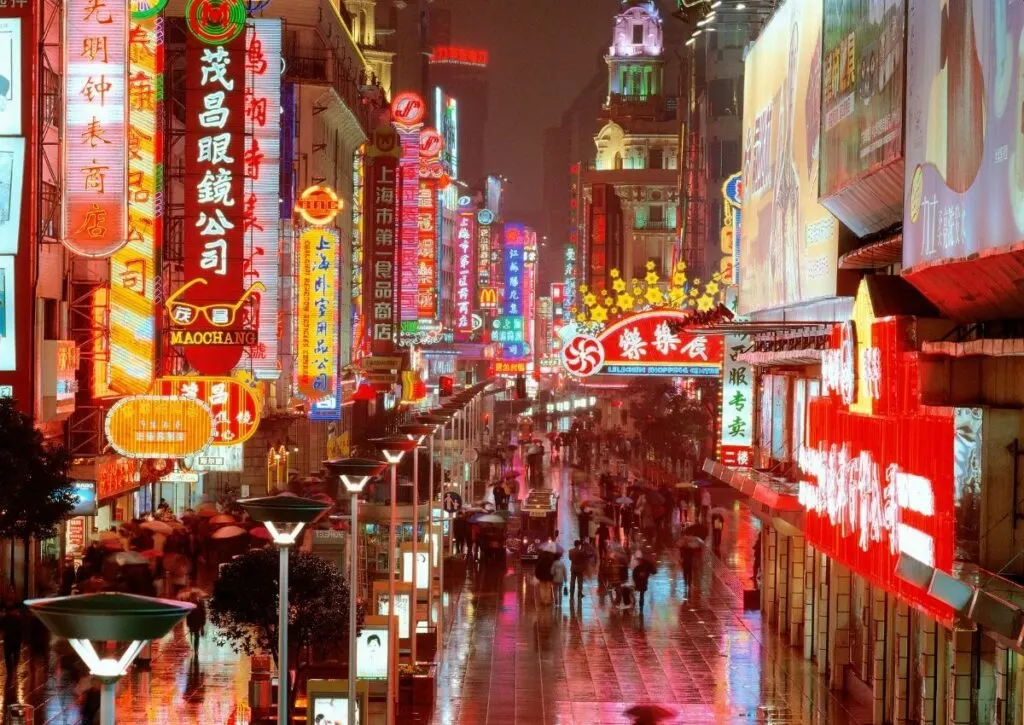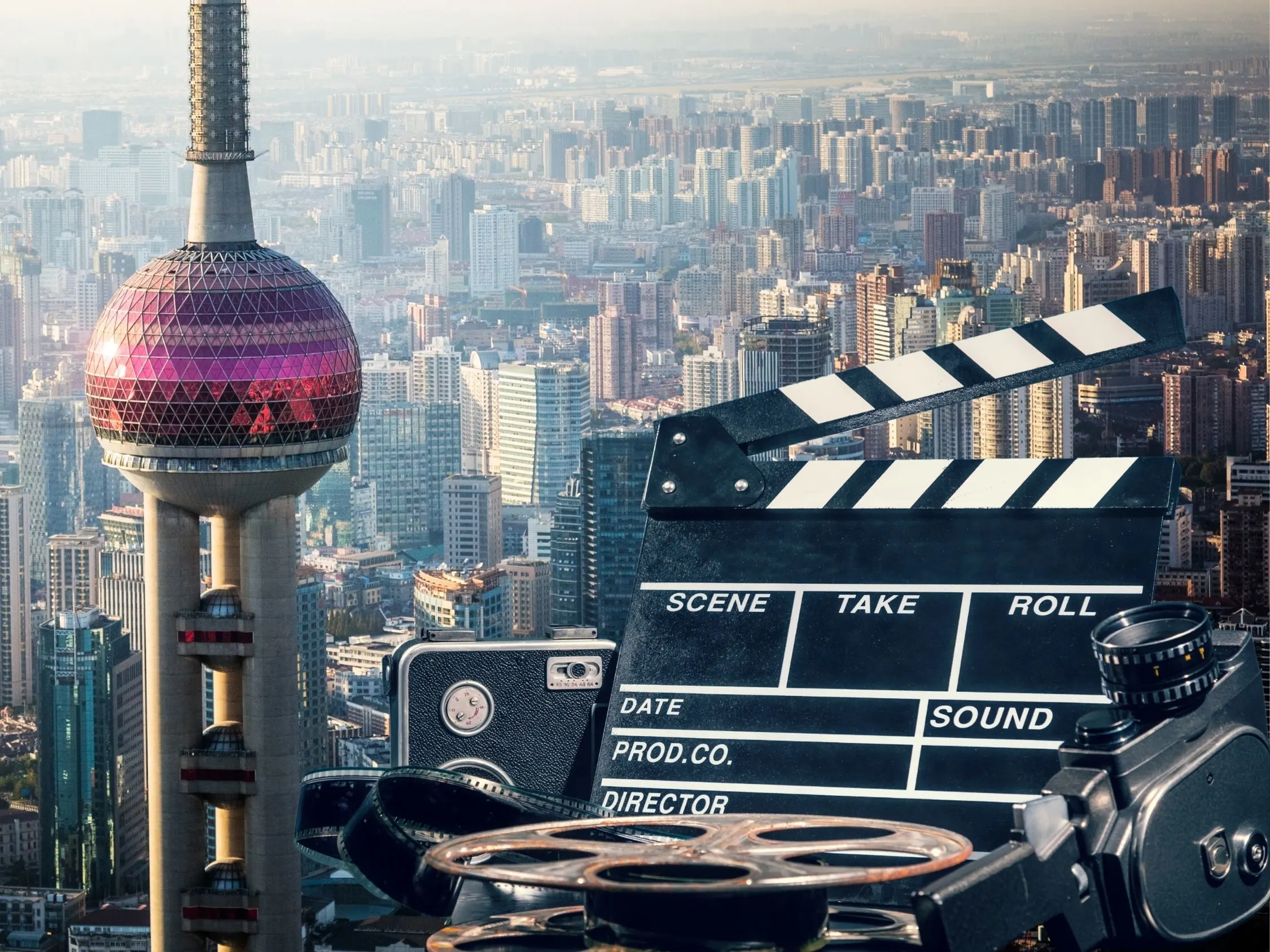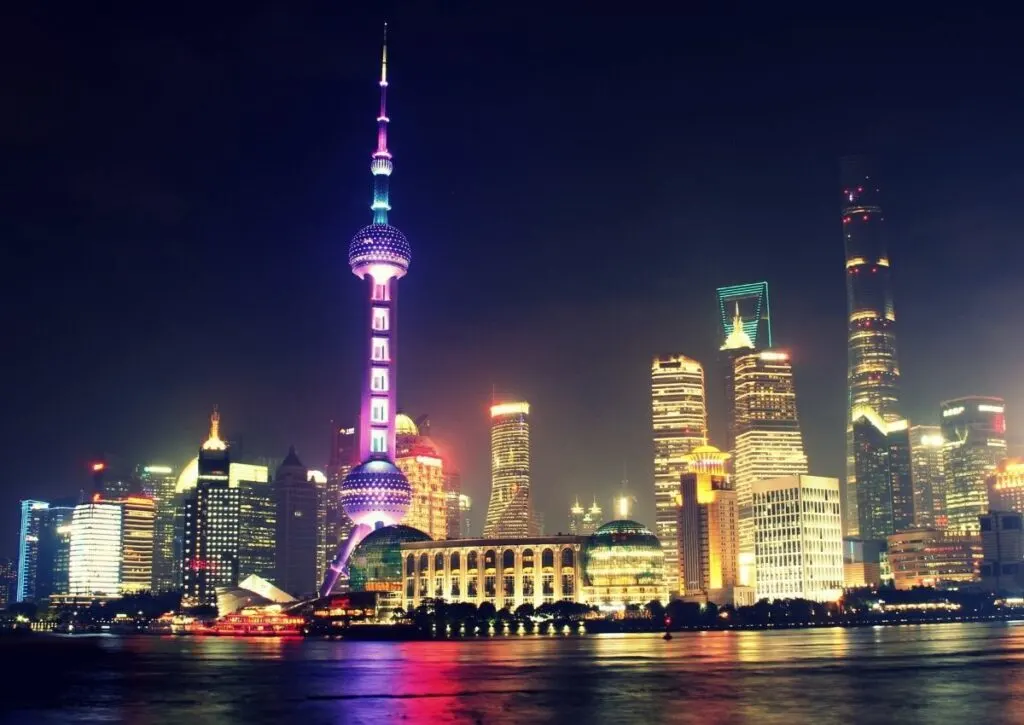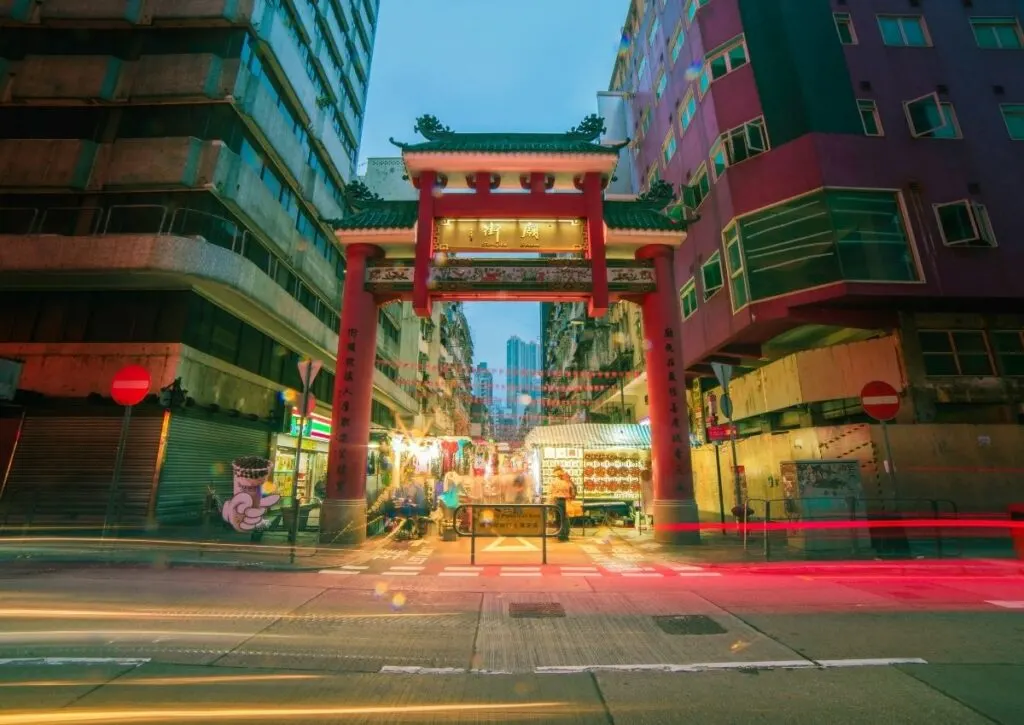Sofia De Vera combines a heartfelt passion for cinema with over 15 years of critiquing for esteemed film publications, wielding academic credentials from the University of Southern California and New York University, to serve as your personal guide through the enchanting worlds of film and television. Her full guest bio can be found here.
Despite its rapid journey to modernity over the past half-century, China is still an ancient country. This can be seen and felt in the magnificent palaces standing today and in the remote temples still visited by Buddhists. It has a long and rich history that has sparked the interest of storytellers through the years – which explains why there are so many remarkable movies set in China.
When cinema came to the old empire, it became an innovative way of sharing the legends that were born there. But filmmakers have been very interested in China’s recent years too. In the last one hundred years, the country has faced wars and revolutions, some of which have been depicted in movies as the events were happening.
Nowadays, China has one of the largest film industries in the world, with lots of great movies being made and distributed around the globe. Its filmmakers feel proud and fascinated by the gorgeous sights of the country. These movies are proof of it.
Why travel via cinema – and by extension, watch movies set in China? Because wanderlust can take grip at any time, and nothing compares to an on-location movie when it comes to transportive experiences that may be done from home. These films frequently feature magnificent cityscapes, inspiration geographies, and diverse cultures, and they motivate us to travel to new places or relive our experiences when we return home.
In these Chinese films, the destination becomes the star.

Although not all of these films are happy – tragedies and misery are as unavoidable in cinema as they are in life – each one provides panoramic vistas of the mighty Middle Kingdom.
These Chinese films have narratives that rely on their settings as much as their main protagonists, and as a result, spectators get a glimpse of this iconic country through the director’s eyes. To honor the concept of cinematic travel, we have also assembled lists of our favorite films shot in some of our all-time favorite travel destinations: San Francisco, Mexico, Ireland, France, Japan, Spain, and Australia.
It will be a brief but enjoyable journey, regardless of which film you choose, and will have you wanting to book a ticket on the next flight out to visit Harbin, Macau, the Happy Valley Races, Mt Tai, and all the other incredible landmarks of China.
Wondering where to watch? It depends on where you live in the world and which streaming services you have. We link to the streaming service we watch on in each case - be it Netflix, Amazon Prime, Apple TV+, or elsewhere.
You can get one month free of Amazon Prime (or a 6-month trial for students) of Amazon Prime and also get immediate access to FREE Two Day shipping, Amazon Video, and Music. While you won't be charged for your free trial, you'll be upgraded to a paid membership plan automatically at the end of the trial period - though if you have already binged all these, you could just cancel before the trial ends.
Apple TV+ also has a one-week trial, and Hulu has a one-month trial (which can be bundled with Disney!). Another option might be using a VPN to access Netflix titles locked to other regions. Netflix is now available in more than 190 countries worldwide and each country has a different library and availability. US Netflix is (understandably) one of the best.
While we wish everything could just be in one place - for now, it seems these are the best streaming platforms to watch on.
Page Contents
The Spring River Flows East (1947)
Known as the Chinese Gone with the Wind, The Spring River Flows East (1997) is an epic made by Cai Chuseng and Zheng Junli.
It’s a sprawling story that was released in two parts due to it being over three hours long. One part tells the struggles of a marriage, after the husband, Zhongliang (Bai Yang), has to leave Shanghai due to the Sino-Japanese War. The other tells of his return, eight years later, and his meeting with his estranged wife, Sufen (Tao Jin), and son, Kangsheng.
This tragic story shows China in one of its harshest moments. The sorrow of the couple as they live their lives in different cities, thinking and worrying about each other. Their willingness to help their country and what they must endure in the name of it: Zhongliang in the Red Cross medical corps, and Sufen as a refugee and a single mother.
The movie highlights the economic inequality that China suffered at the time, particularly in the second part. Both husband and wife moved on or tried to, and when they reunite, everything is different. Zhongliang is a successful businessman. Sufen is a maid. The war brought change, both in their lives and in China as a whole.
The Last Emperor (1987)
With The Last Emperor [L’ultimo imperatore] (1987), Bernardo Bertolucci won the Academy Award for Best Director, Best Picture, and Best Adapted Screenplay – making it worth alone to appear on a list as one of the best movies set in China.
The movie was adapted from the autobiography of the last Emperor of China, Puyi (1906–1967). It portrays the life of Puyi as an emperor, beginning with his ascension to the throne when he was only two years old, showing his life as a prisoner of the Communist Party of China and his posterior retirement to live as a gardener.
The first part of the movie and its last scenes take place inside The Forbidden City, in Beijing. The majestic palace was the home of every Chinese Emperor since it was built in 1420, during the Ming dynasty. It’s comprised of hundreds of buildings (and over nine thousand rooms), each one structured in accordance with Feng Shui, which is to say most of them face south, towards the Sun.
The Last Emperor depicts the palace in all its splendor: gigantic pillars and walls of red stone, the roofs tiled with gold, lush gardens, and expansive courtyards filled with the Emperor’s followers. The palace became a museum after the end of the Qing dynasty and can still be visited today.
Raise The Red Lantern (1991)
Raise the Red Lantern [大红灯笼高高挂] (1991), by Zhang Yimou, is a drama film set in the Warlord Era of China, a period during the 1920s when the country’s government was divided between several military factions.
It tells the story of Songlian (played by Gong Li), a young woman who marries a wealthy lord (Ma Jingwu) after her family dies. However, she does not become the wife of this lord: he already has a wife and two other women, making Songlian his third concubine.
The movie was shot entirely in one of China’s most stunning states: the Qiao Family Compound. Built-in the beginning of the 18th century, the palace has over three hundred rooms and twenty-five courtyards. The rooms are adorned with many of the furnishings from the time, and the gardens are still kept. Like the movie shows, red lanterns light the palace halls and entrances. Now a museum, one can explore the emblematic state and take in a piece of the country’s past.
The Qiao Family Compound is located in the ancient city of Pingyao. The city’s architecture is a sight to behold, dating back to Qing and even the Ming dynasty. It was founded around 800 B.C. and by the 19th century, it had become the financial center of the whole Qing Empire. Rated a quintuple A tourist attraction, it houses not only the compound but also some of the most beautiful Buddhist temples in all of China.
Seven Years In Tibet (1997)
Seven Years in Tibet (1997), by Jean-Jacques Annaud, is both a war drama and a biopic. It stars Brad Pitt and David Thewlis as two Austrian mountaineers (Heinrich Harrer and Peter Aufschaniter), who find themselves imprisoned in a Himalayan war camp when World War II breaks out.
About five years into their imprisonment, Heinrich and Peter escape to Tibet and find refuge in a holy city, where they meet the 14th Dalai Lama. Even though the Dalai Lama is only a boy, he and Heinrich actually became close friends through the sharing of their completely different ways of living.
The city where Heinrich and Peter become absorbed in Tibetan culture is called Lhasa, which literally means “Place of Gods”. It’s located in the center of the Tibetan Plateau, surrounded by snow-peaked mountains. Since the 17th century, it’s both the administrative and religious capital of the country. Some of the most important Buddhist sites in the world are in this city.
The Potala Palace stands on top of Marpo Ri, the “Red Hill”, and looks over the rest of the city. The construction of this fortress started by the orders of the 5th Dalai Lama in 1645 and by 1649 it had become one of the most stunning buildings in the world: hundreds of rooms, thousands of shrines, and statues distributed in thirteen stories. Good Morning America and USA Today declared it one of the “New Seven Wonders”.
Crouching Tiger, Hidden Dragon (2000)
Crouching Tiger, Hidden Dragon [臥虎藏龍] (2000) was Ang Lee’s first incursion into martial arts movies, and it became a commercial and critical success – and remains today one of the most famous movies set in China. It was nominated for ten Academy Awards and won four of them, including Best Foreign Language Film.
Set in 19th-century China, during the Qing dynasty, the movie tells the story of four individuals whose lives become entangled after the stealing of a fabled sword: Mu Bai (Chow Yun-fat), a swordsman who wants to leave the fighting behind; Shu Lien (Michelle Yeoh), his longtime friend and warrior partner; Jen (Zhang Ziyi), the daughter of a governor who is about to marry someone she doesn’t love; and Lo (Chang Chen), a mysterious outlaw who has met Jen before. It’s part of the wuxia genre, a type of Chinese fiction work that tells the stories of mythical martial artists.
The film does an amazing job of showing the gorgeous sights that China has to offer. Hongcunzhen, the village where Mui Bai retires to, is a great example. A stream flows through the centuries-old city. Its residential areas are connected via waterways. Richly carved stone bridges cross the water, forming what it’s known as the “Moon Lake”, a wide expanse of calm mirror-like water.
East of Hongcunzhen stands one of the largest bamboo forests in China: the Anhui Bamboo Forest. This site can be seen in the movie during the treetop fight between Mu Bai and Jen, where they clash swords while standing gingerly on the top of the bamboo plants. The way they flow over the trunks and the leaves give the forest truly mythical qualities.
The climax of the movie takes place in a legendary temple in the mountain, which is actually the Fortune Celebration Temple in Mount Cangyan. It’s located in the vicinity of Beijing and can be visited by train or bus. There one can see the Bridge-Tower Hall, a stone arch built over a gap in the mountain. This bridge can be seen in one of the most moving scenes of the movie when Jen makes a final decision after her long journey.
Eat Drink Man Woman (1994)
Eat Drink Man Woman [飲食男女] (1994), also by Ang Lee, is a comedy-drama film, where food takes central place. Set in Taipei, it tells the story of three sisters (played by Yang Kuei-mei, Wu Chien-lien, and Wang Yu-wen) and their father, Mr. Zhu (Lung Sihung), the best chef in the city, as they work through their problems with love, family and Chinese tradition. It won several awards and was nominated for Best Foreign Language Film at the Academy Awards.
In China, food is a critical part of all relationships, particularly those within a family. A good dinner puts everyone in a good mood and makes them amicable. A bad one can disrupt the whole house. The movie begins with Mr. Zhu making an incredible meal of several dishes for his daughters, but, when they sit down to eat, everything goes wrong. The sisters are following their own paths, and Mr. Zhu doesn’t know how to connect with them. As they grow further and further apart, the dinners become something ugly, a place where the family bickers and fights.
Throughout the film, Mr. Zhu will try to find his place in the world now that his daughters have grown, and food will be the answer. Eat Drink Man Woman is a love letter to food, portraying it both as a form of love and the best way for different generations to connect.
The Nightingale (2013)
The Nightingale [夜莺] (2013), by Philippe Muyl, is a road trip film that explores the beauty of rural China, its farms, and its forests. It tells the story of Renxing (Xinyi Yang), a young girl addicted to her iPad, whose life is thoroughly planned by her parents. When both of them have business trips on the same weekend, Renxing is entrusted to Zhu Zhigen (Baotian Li), her estranged grandfather. Together with her caged nightingale, grandfather and granddaughter begin a trip through the Guanxi Province.
The movie shows a hidden part of China: its little villages with terraced farms of vibrant greens. It’s full of moving scenes where Renxing learns the wonders of a life outside the city. One of them shows grandfather and granddaughter running through a bamboo forest and playing in one of the many waterfalls that are characteristic of Guanxi.
The Nightingale is a great movie to watch if you’re interested in the rural parts of China. It’s a simple tale, but one full of emotion and very relevant to this day and age.
The Painted Veil (2006)
The Painted Veil (2006), by John Currann, is a dramatic film and the adaptation of the 1925 book of the same name.
It stars Edward Norton as a British doctor who is treating a cholera outbreak in a village in China. At the same time, he’s trying to save his crumbling marriage, after finding out that his wife (played by Naomi Watts) had an affair with a vice-consul. During their fight against the disease in the remote village of Mei-tan-fu, husband and wife rekindle their love for each other, but cholera is implacable and misfortune strikes.
The movie shows one of China’s most beautiful natural landscapes: the Li Jiang, the characteristic river of the Guangxi province that crosses through lush forests and karst mountains. These mountains are like nothing else in the world: the tall rock formations are made out of soluble rock, and, with the passing of time, this rock has slowly dissolved, giving the mountains a unique look.
The poster of the movie depicts the scene where the couple rows through the Li Jian River by boat. Alone in its calm waters, surrounded by the mountains, they are closer than ever.
Farewell My Concubine (1993)
Farewell My Concubine [霸王別姬] (1993), by Chen Kaige, was the first Chinese movie to win the Palme d’Or at the Cannes Film Festival. It depicts the life of Dieyi (Leslie Cheung), an opera actor in the Peking Opera, who is torn apart by his unrequited love for his colleague, Xiaolou (Zhang Fengyi). Farewell My Concubine is a historical drama and, at its core, it’s the idea of performance: in terms of theatre, but also in the sense that all identity is a performance.
The film delves into the culture of the Chinese opera, particularly the Peking/Beijing (two alternative names of the same city) style. It entails singing, miming, dancing, and other types of bodily expression. This form of performance is considered a “cultural treasure” of the country and it is still practiced today.
The way the movie portrays Chinese opera varies through its runtime. Sometimes it’s beautiful, other times it´s eerie and mysterious and, by the end, it’s tragic. The titular “Farewell My Concubine” is performed several times during the film: this traditional piece tells the story of a king who is surrounded by enemy forces and it’s about to die and of his concubine, who kills herself out of love with her master’s sword.
In the Mood for Love (2000)
Wong Kar-wai’s classic In the Mood for Love [花樣年華] (2000) is a dramatic romance set in 1962 British Hong Kong and remains one of the iconic movies set in China.
The region functioned as a colony under the rule of the British Empire from 1841 to 1997, when it was returned to China. The mix of the Chinese and British influence resulted in a whole culture on its own. This entrancing film shows the people of Hong Kong and their particular way of living before it became part of mainland China again.
The story follows Chow Mo-wan (Tony Leung), an expatriate from Shanghai, and Su Li-shen (Maggie Cheung), a secretary, rented-room neighbor who realize that their spouses are having an affair with each other. They start to develop a relationship, bonding over food and Chow’s passion for writing.
In the Mood for Love is full of little details that paint a rich picture of Hong Kong. From the street food bought with tiffin carriers, to the rise of the rice cooker, so popular today. One of these details is the inclusion of the mahjong-related gatherings: Chow and Su first meet due to their neighbor’s mahjong games, which happen quite regularly in the dining room of the residence. Mahjong originated in China and Hong Kong in the 19th century and has since then widely expanded through Asia.
Avatar (2009)
Avatar (2009), by James Cameron, is the highest-grossing movie of all time. It tells the story of the colonization of Pandora, a beautiful and luscious world full of alien plants and creatures.
Jake Sully, a disabled veteran played by Sam Worthington, joins in the Avatar Program, which provides him a Na’vi body. The Na’vi are the intelligent species that populate the world, and soon Jake meets one of them, Neytiri (played by Zoe Saldana). Through their relationship, Jake learns about Pandora’s ecosystem and the need to preserve it as it is.
Even though most of the movie was filmed using motion capture technology (so most of what it’s seen on screen is computer-generated graphics) and so is technically not a movie set in China, one of the set pieces is famously based in real-life China. The art designers of Avatar, who won an Academy Award for their work, took inspiration from the Chinese karst formations in order to create the flying mountains that are characteristic of Pandora.
The director has said that Huangshan (also known as “Yellow Mountain”) was the particular site that inspired their work. This grand mountain range is rich with pine and bamboo forests and extends for 62 square miles. It was the first Chinese site to be declared a World Heritage Site by UNESCO and is one of the most popular Chinese tourist destinations.
Hero (2002)
The first Chinese movie to debut at first place in the American box office, Hero [英雄] (2002) is a wuxia story loosely based on the assassination attempt of the Qin Shi Huang, the first Emperor of China and founder of the Qin dynasty, in 227 BC. The film was made by the producers of Crouching Tiger Hidden Dragon (2000) with the collaboration of Quentin Tarantino.
It stars Jet Li as a warrior with no name who confronts Qin in his palace, trying to gain his trust by telling him that he has saved his life by killing three assassins. The warrior recounts his past, all the while showing the extreme state of disarray that China was in at the time. As they talk, the warrior and the king start to understand each other, leading to a very inspiring ending.
The real-life palace where the characters meet is called Epang, and it’s located in the city of Xi’an, in the Shaanxi province. It’s a stunning construction with several buildings topped by classical xieshan roofs over situated over a stone rise. To get to the main palace, one must follow a red road flanked by statues of ancient warriors and go up several sets of imposing red stairs. The movie shows an impressive sight: the courtyard leading to the palace, filled to the brim with soldiers of the Emperor, and the warrior walking alone.
The most beautiful scene in Hero is the confrontation at the lake between the warrior and Broken Sword (Tony Leung). They fight next to calm water that mirrors the mountain and its forests. It was filmed in the Jiuzhaigou National Park, in the Sichuan province, known for its mountains that harbor polychromatic lakes and multi-step waterfalls. It’s simply one of the best sites to visit while in China.





